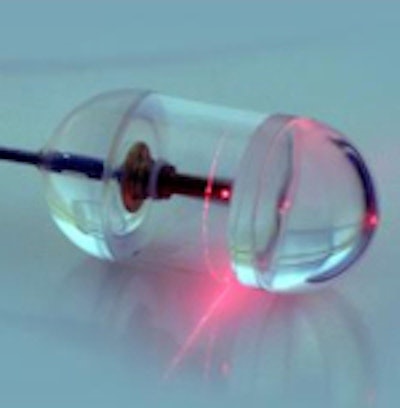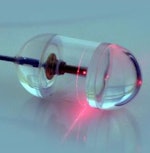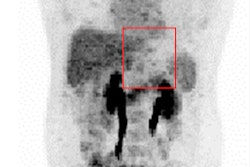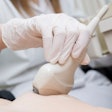
Physicians from Massachusetts General Hospital (MGH) have developed a pill-sized device containing a near-infrared laser that can be used to examine patients with Barrett's esophagus, a precancerous condition typically caused by chronic exposure to stomach acid. Their research was published online January 13 in Nature Medicine.
Dr. Gary Tearney, PhD, and colleagues from the Wellman Center for Photomedicine at MGH developed the capsule, which contains optical frequency domain imaging (OFDI) technology. A rotating laser tip emits a beam of near-infrared light, and sensors record light reflected back from the esophageal lining, according to the researchers.
 Endomicroscopy capsule. Image courtesy of MGH.
Endomicroscopy capsule. Image courtesy of MGH.The capsule is attached to a tether that connects to an imaging console, which allows a physician to control the device. After the patient swallows the capsule, it is carried down the esophagus by normal contraction of the surrounding muscles. When the capsule reaches the entrance to the stomach, it can be pulled back up by the tether. OFDI images are taken throughout the capsule's voyage down and up the esophagus.
The researchers tested the system in 13 participants who did not undergo sedation. Six were known to have Barrett's esophagus and seven were healthy volunteers. The doctors operating the device were able to image the entire esophagus in less than a minute, and a procedure involving four passes -- two down the esophagus and two up -- could be completed in approximately six minutes. A typical endoscopic examination requires that the patient stay in the endoscopy unit for approximately 90 minutes.
The technology could be used to develop an inexpensive, low-risk device for screening individuals for Barrett's esophagus, according to the group.



















